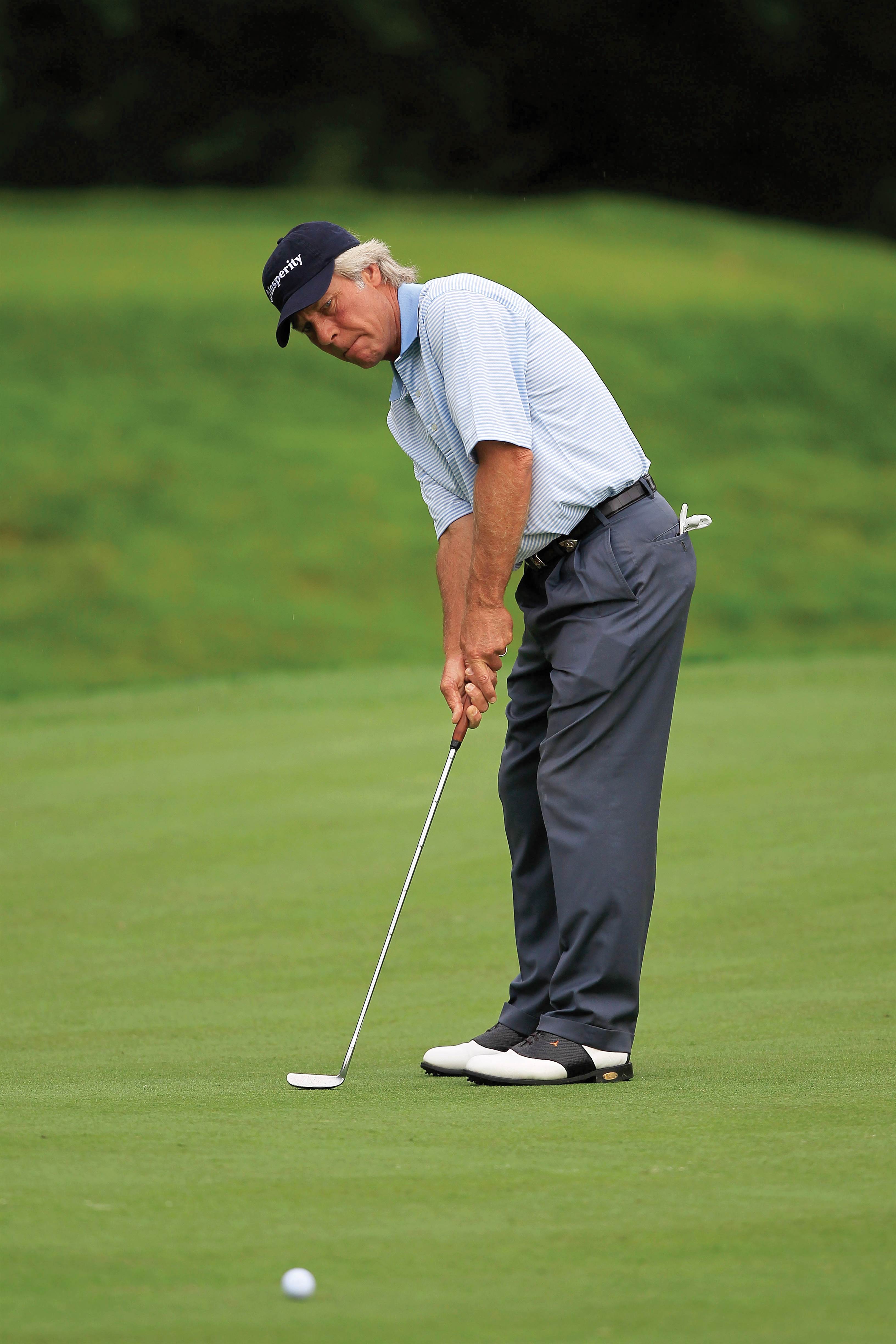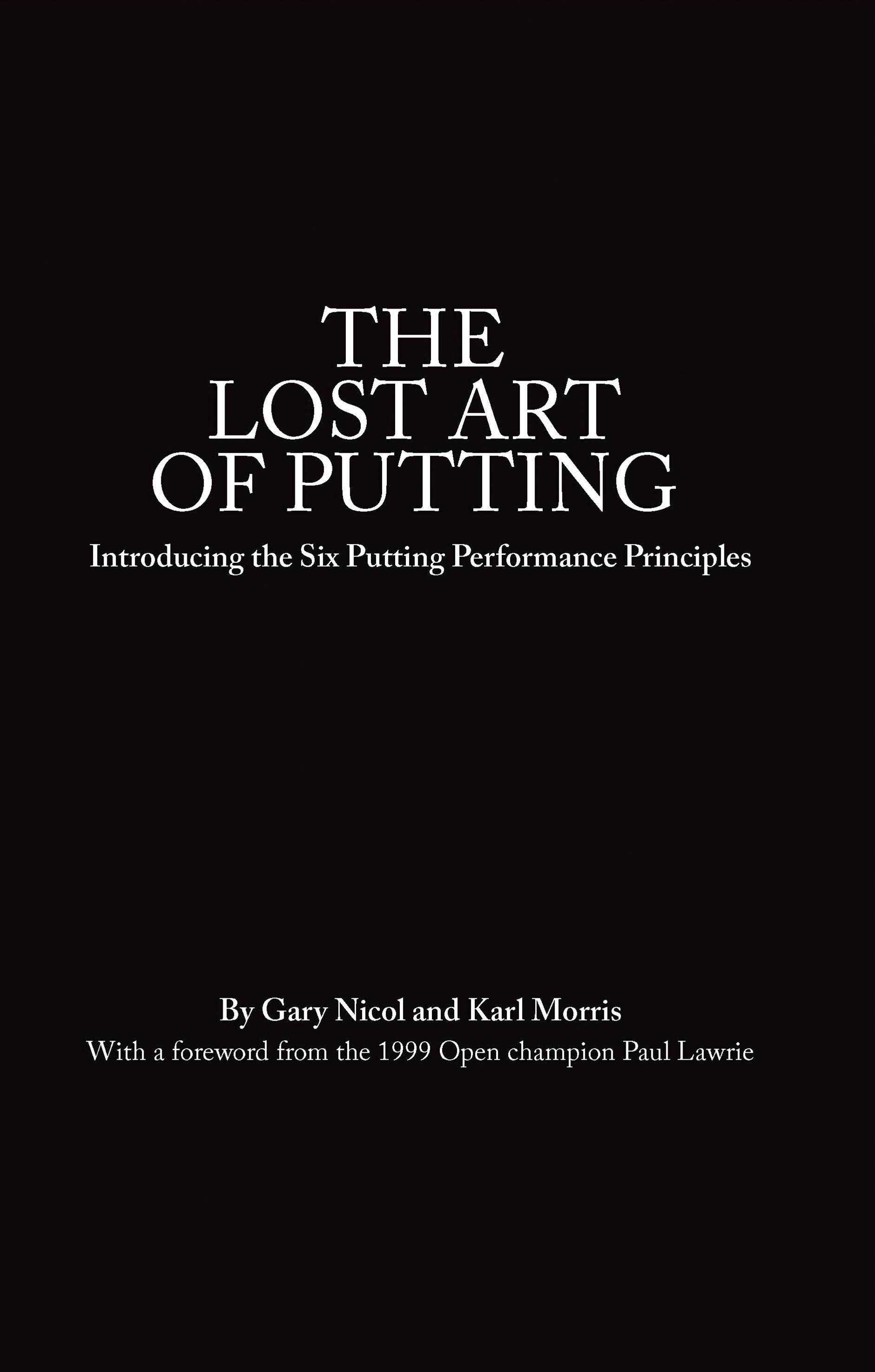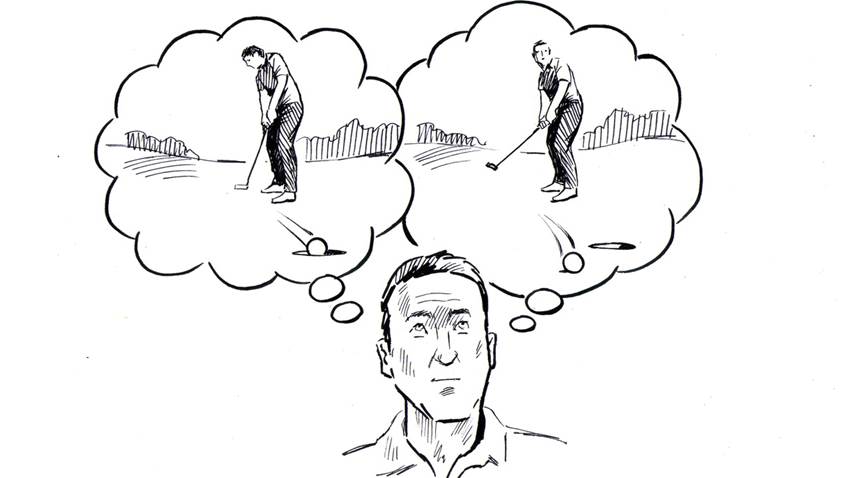Does the stroke create the putt or does the putt create the stroke? Introducing a new approach to improving your putting that can liberate golfers old and new on the greens ...
To be child-like is to have a simple fascination in getting the ball into the hole and to love the task of doing so.
To be childish is to expect a certain outcome will come your way, that you deserve to hole the putt or that you shouldn’t miss from a certain distance.
The Lost Art of Putting will help you become more child-like on the greens and less childish.
It is the belief of leading tour coach Gary Nicol and performance coach Karl Morris – who have 60 years’ combined coaching experience – that too much attention is paid to technique and equipment when it comes to putting. The game of golf is not about finding ‘the’ way to do it but more a case of discovering, or perhaps more importantly uncovering, ‘your’ way to do it.
The Six Putting Performance Principles they will introduce to you in this six-part series have the potential to liberate you so that you can experience what you are truly capable of on the greens.
Born in Scotland, Gary Nicol turned professional in 1988. Since then, he has travelled the world coaching golfers of all standards from weekend players to tour pros including Ryder Cup players, Olympians and winners of major championships. Gary is a certified TrackMan Master and Mind Factor coach and is based at the stunning Archerfield Links on Scotland’s Golf Coast.
Karl Morris has been involved in performance coaching for 30 years. In that time, he has worked with multiple major winners in golf – including Darren Clarke and Graeme McDowell – Ashes-winning captains in cricket as well as Premier League and international footballers. His passion has always been to make mental game coaching both practical and applicable.
PART 1 – WHAT’S YOUR STORY?
How many putts have you already decided are going to miss before you even reach the green – and isn’t it about time you changed that?
A missed putt in and of itself means nothing beyond the meaning we personally attach to it.
Great putters tend to adopt a good attitude to putting. Your story will determine or at the very least, heavily influence your attitude.
Now, here is the key: the stories you tell yourself will either be useful to you or useless, exactly the same principle we will discover with attention. The narrative will either support your goals or the stories will hold you back.
 What you will produce in the outside world will be relative to the stories you keep telling yourself. The stories we tell ourselves can begin to act out, even at a subconscious level.
What you will produce in the outside world will be relative to the stories you keep telling yourself. The stories we tell ourselves can begin to act out, even at a subconscious level.
As Trevor Sylvestor, a great therapist, tells us: what the thinker thinks the prover proves.
So, if we think we are poor on the greens then the ‘prover’ inside our minds will seek supporting evidence.
Every three-putt is a confirmation of the story. Every stroke feeling a bit jerky and every long putt left short is the opportunity for the prover to ‘prove’ he is a poor putter.
Any evidence to counter that belief is ignored. The putts rolled smoothly, the birdie putts that go in, the great lag putt from 50 feet? They are all passed over because the thinker thinks we are poor at putting so it doesn’t in any way go looking for any evidence to contradict that story.
The thinker loves to help the prover by talking about how many putts he has taken. He draws company in the misery of poor putting. He tries to recruit other ‘believers’ who struggle on the greens.
There is almost a badge of honour worn by people who putt badly and they are only too willing to share it with others.
There is more of an honour in being a good ball-striker than a good putter.
The ‘he is a great ball-striker’ story is delivered with a puffed-out chest and a sense of dramatic pride yet how often have we heard people say that such-and-such a player can’t really hit it but get him on the greens and he is something of a ‘blade merchant’ – almost as if it is a lesser ability to be great on the greens.
People love to hear about legendary ball-strikers such as Ben Hogan and Mac O’Grady yet the same aura doesn’t seem to be afforded to great putters such as Bobby Locke, Ben Crenshaw and Loren Roberts.
Some players will look back with regret on their careers as a result of being less than they could have been on the greens – partly as a result of the story they bought into of the ego-boosting value of ball-striking over the simple task of rolling the ball on the green.
So what is your story? How have you constructed a narrative around what happens when you have a putter in your hand? How do you talk about your performance on the greens?
How do you talk about your putting with others – and perhaps more importantly with yourself?
What do you say to yourself when you putt well? Do you dismiss those days as flukes?
How do you explain the days when the ball just doesn’t want to go in?
 Consider how much the story you have carried around with you for so long might have held back your progress.
Consider how much the story you have carried around with you for so long might have held back your progress.
Do you want to keep with the same old story or could it perhaps be the time to take charge of a new script? Do you want to be the author of your own future story or do you want to keep following the same old script?
The most important aspect to understand is unless you change your story – the narrative you continually tell yourself – then no matter how many times you change your putter or no matter how much work you do on your putting stroke, you will never see any lasting change.
Stories are that powerful. They bind us to our own self-imposed reality.
The Lost Art of Putting is available now on Amazon in hardback and Kindle formats.
Related Articles

Review: Clearwater Golf Club

Review: Omaha Beach Golf Club










